'Indian single malts have a very specific character.'
'They are sweet when you take a frontal palette approach and change significantly with the addition of water.'
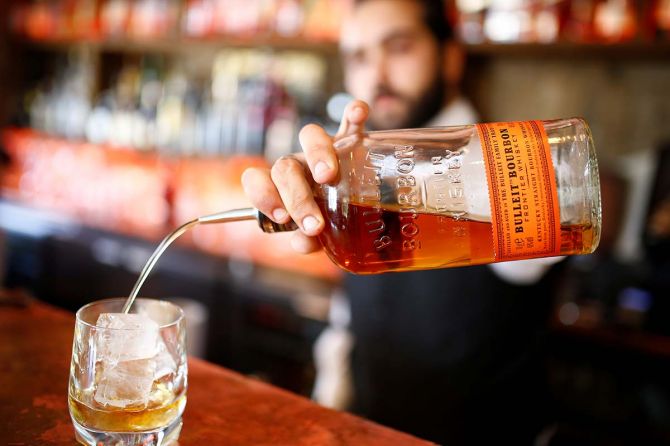
In 2006, connoisseurs at whisky exhibitions around the world caught a whiff of a mysterious new liquor whose name and provenance were unknown.
It's the moment when Amrut, the first Indian single malt, was finally having its place in the sun -- two years after its launch in Glasgow, Scotland.
"Launching it was not easy, because India was known for making molasses- or flavour-based liquids. The moment we said we were from India, there was resistance," says Vikram Nikam, joint managing director at the Benglauru-based Amrut Distilleries.
So, they decided to showcase the product at exhibitions, inviting people to sample it while keeping its name and origin a secret.
"They would taste and think it was from some part of Scotland. Then we would reveal that it was actually an Indian single malt, which often left them shell-shocked," says Nikam.
That is how Amrut gained appreciation and, more importantly, earned respect as an Indian whisky, he adds.
The turning point came in 2009, when the distiller launched Amrut Fusion. It was declared the third best whisky in the world by the critic Jim Murray in the 2010 edition of Whisky Bible.
"That recognition had a profound impact on the perception of Indian liquor globally," says Nikam.
Last month, the Indri Diwali Collector's Edition 2023, manufactured by Haryana-based Piccadilly Agro Industries, was crowned the best whisky at the Whiskies of the World Awards.
From Amrut to Indri, the story of Indian single malts is one of resurgence.
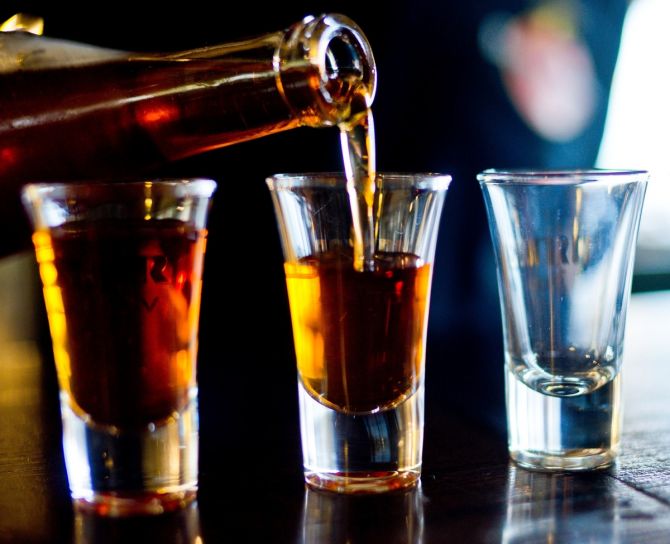
Changing fate of Indian liquor
In the 1960s and 1970s, there was a sense of leniency towards alco-bev spirits.
Indians mostly had to resort to the 'Scotch whisky' imported from Scotland.
Given the large consumption market, local distillers seized the moment, resulting in a manufacturing boom in these decades.
Mohan Meakin was manufacturing whiskies, but mostly for military canteens.
Amrut Distilleries, a subsidiary of the N R Jagdale Group -- which was manufacturing sedatives for its pharmaceutical arm -- also started brewing local rum and brandy to supply to military canteens.
In the 1970s and 1980s, liquor was produced in India in large volumes to cater to a growing market. But it came at the cost of quality, as the reputation of Indian whisky took a hit.
In the 1990s and the early 2000s, Indian distilleries began experimenting with liquids they were producing after recognising an opportunity.
At Amrut, too, much had changed. "We had started distilling malt whisky in the 1980s, but by the 1990s our goal had changed to premiumisation," says Nikam.
It is only with the success of Amrut in the mid to late 2000s that Indian spirits took wings.
"In some ways, Amrut set a template for other Indian single malt manufacturers," says Hemanth Rao, founder of the Bengaluru-based Single Malt Amateurs Club -- a society that began as a 'drunk idea' in 2011 and now has over 6,500 members.
The trajectory of launching a product on the global stage and then bringing it back to India was followed by all major single malt makers in the country.
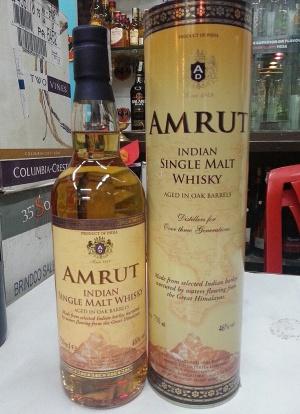
Photograph: Kind courtesy Wikimedia Commons
After Paul John, launched in the UK in 2012, came Rampur (eponymous to its place of origin) in April 2016.
The latter debuted in Las Vegas 30 years after Rampur Distillery (now Radico Khaitan) began operations.
In the first year itself, this bottled Indian single malt from the foothills of the Himalayas won the Double Gold at the San Francisco World Spirits Competition.
Whisky Advocate magazine rated it fifth among the top 30 whiskies globally in 2017.
"That gave us a lot of encouragement that we were on the right track to create a great Indian single malt," says Sanjeev Banga, president, international business, Radico Khaitan.
Today, the brand has seven expressions of Rampur.
"Indian distillers today are not shy about getting recognition or entering competitions. It was important for them to launch in the West first. After the dwindling repute of Indian liquor, a stamp of global approval and appreciation helps brands to gain the confidence of the Indian consumer," says Rao.
Agrees Banga, "We would have faced resistance had we launched in the domestic market first, because the industry was in a nascent stage. The endorsement by the global consumer gave confidence to the domestic consumer also since our price points were much higher, too.
A Rampur double cask bottle retails at anywhere between Rs 8,500 and Rs 12,500 in the domestic market.
"The idea was to take the bull by the horns. We were never chasing volumes and only wanted to put out a fine product in the market. So we went global and brought it back to India, where it ran out of stock very quickly," Banga adds.
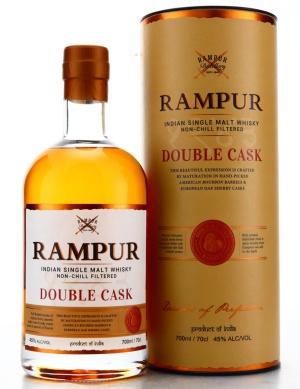
Growing consumption
Whisky consumption in India has been soaring.
According to India Whisky Market Outlook, 2027-2028, by Research and Markets, a market analysis company, the consumption of whisky is set to reach 289.49 million cases by 2027-2028, which would generate revenues of over Rs 287,000 crore.
'Single malt whisky is expected to grow at a compounded annual growth rate of 22.92 per cent over the forecast period as people demand more flavours,' said the report.
'Single malt whisky has grown a reputation for being a higher quality spirit than blends,' it added.
But what is it about Indian single malts that really set them apart?
"Indian single malts have a very specific character. They are sweet when you take a frontal palette approach and change significantly with the addition of water," says Rao.
A certain mystique around India also helps.
"Everything that goes inside a bottle of Rampur -- starting from the barley and the Himalayan groundwater -- is 100 per cent Indian. The soil and the air all have an effect on the liquid, making it very unique and distinct," says Banga. Rampur is not a complicated formulation but a floral, fruity malt, he adds.
Apart from the barley used, the climatic conditions also have a significant impact on the taste of the spirit.
At Radico Khaitan, based in North India, the liquid is aged for a fairly long time.
The varying temperatures in the region make the liquid interact with the cask forcefully.
Even experts from Scotland agree that ageing in north India is almost four times faster than Scotland, explains Banga.
"So if hypothetically, I age my liquid for 10 years, it is similar to a 40-year-old Scotch," explains Banga.
The evaporation losses in north India are 12 to 13 per cent in the initial years, before averaging 8 to 9 per cent over a period of time.
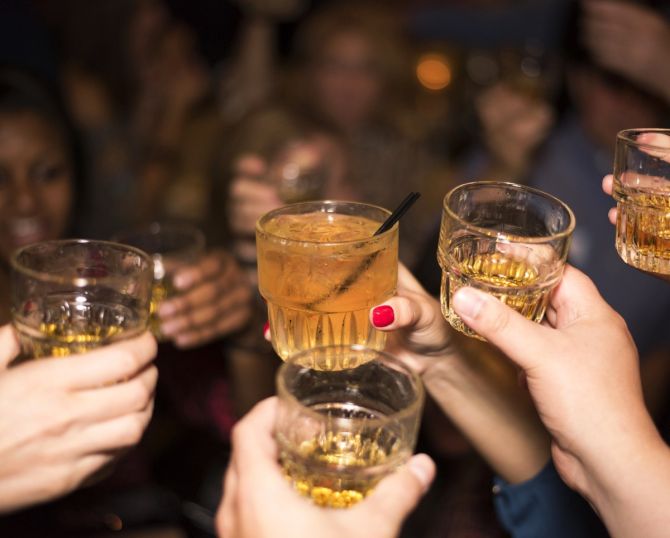
Nikam concurs that the unique balance of humid and dry weather conditions also makes the (evaporation) losses higher than in the colder climes of Scotland.
"We lose 10 to 12 per cent, while they lose 2 per cent per annum. So, because of that our losses are high, but at the same time our liquid also matures much faster."
Unique packaging and identities have also contributed to sales.
A case in point is Rampur's Jugalbandi line of whisky -- its character derived from a unique Indian music term for two contrasting instruments creating a symphony.
"In music, there are seven notes and one other high note. Our Jugalbandi series similarly has eight expressions. We have taken two very contrasting casks and brought them together. It's a uniquely Indian liquid, which has been well appreciated by the consumer," says Banga.
Two of these expressions were launched in 2022, and the third and fourth last month in London. The rest of the expressions will follow in the coming years.
The Indian consumer has also evolved into one seeking -- like with everything else -- more premium blends.
"A lot of this demand is driven by the fact that the Indian consumer is far more well travelled and well informed than before," says Banga.
The Indian consumer also is drinking more premium, causing a much faster growth for it than the regular segment, he points out.
Radico Khaitan's premium portfolio has grown to more than 60 per cent from 37 per cent a few years ago.
The rise of the Indian single malt is heartening. But it is not just the quality that is its USP.
In Nikam's view, "It is the story behind the liquid -- how it is made and what becomes of it -- that also excites aficionados."
Feature Presentation: Rajesh Alva/Rediff.com











